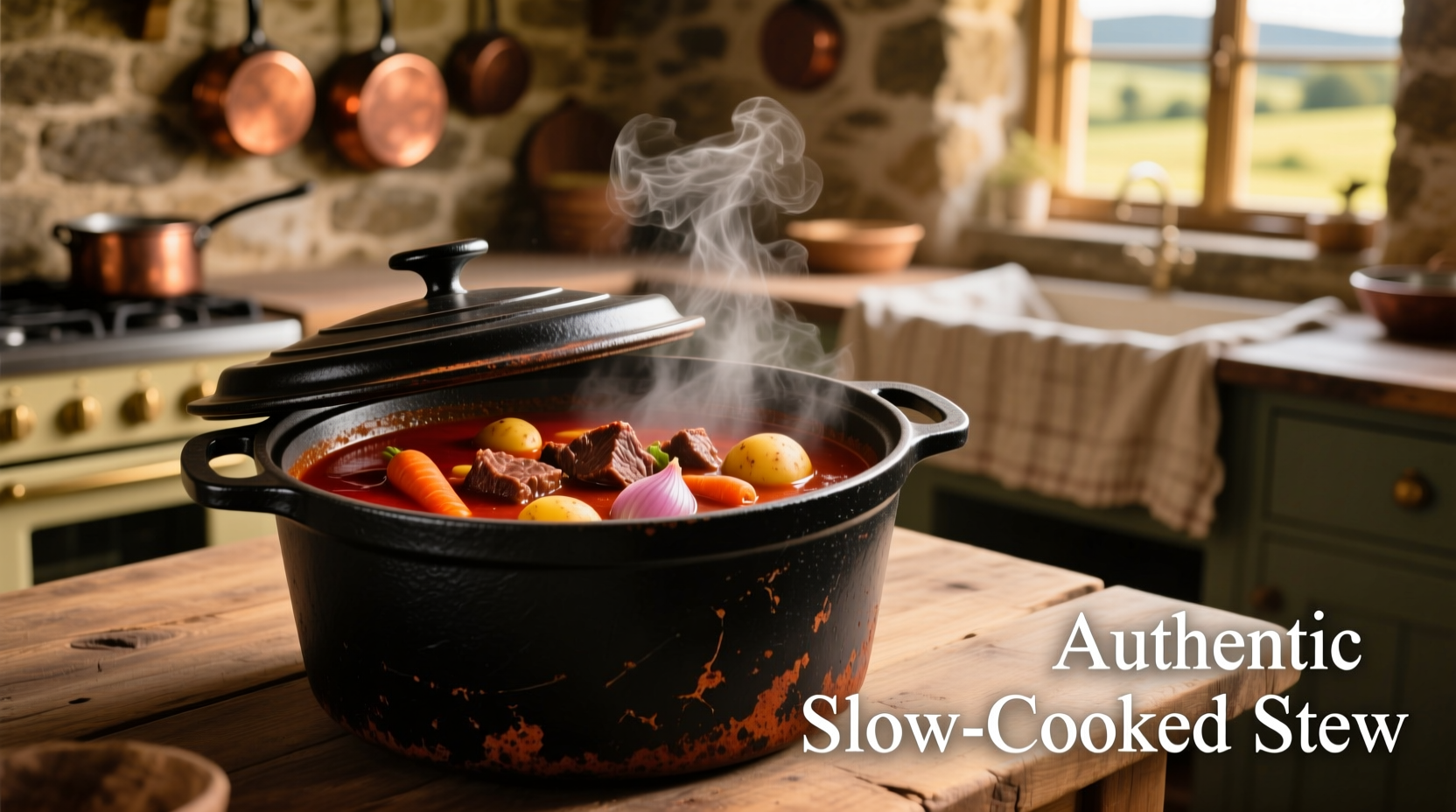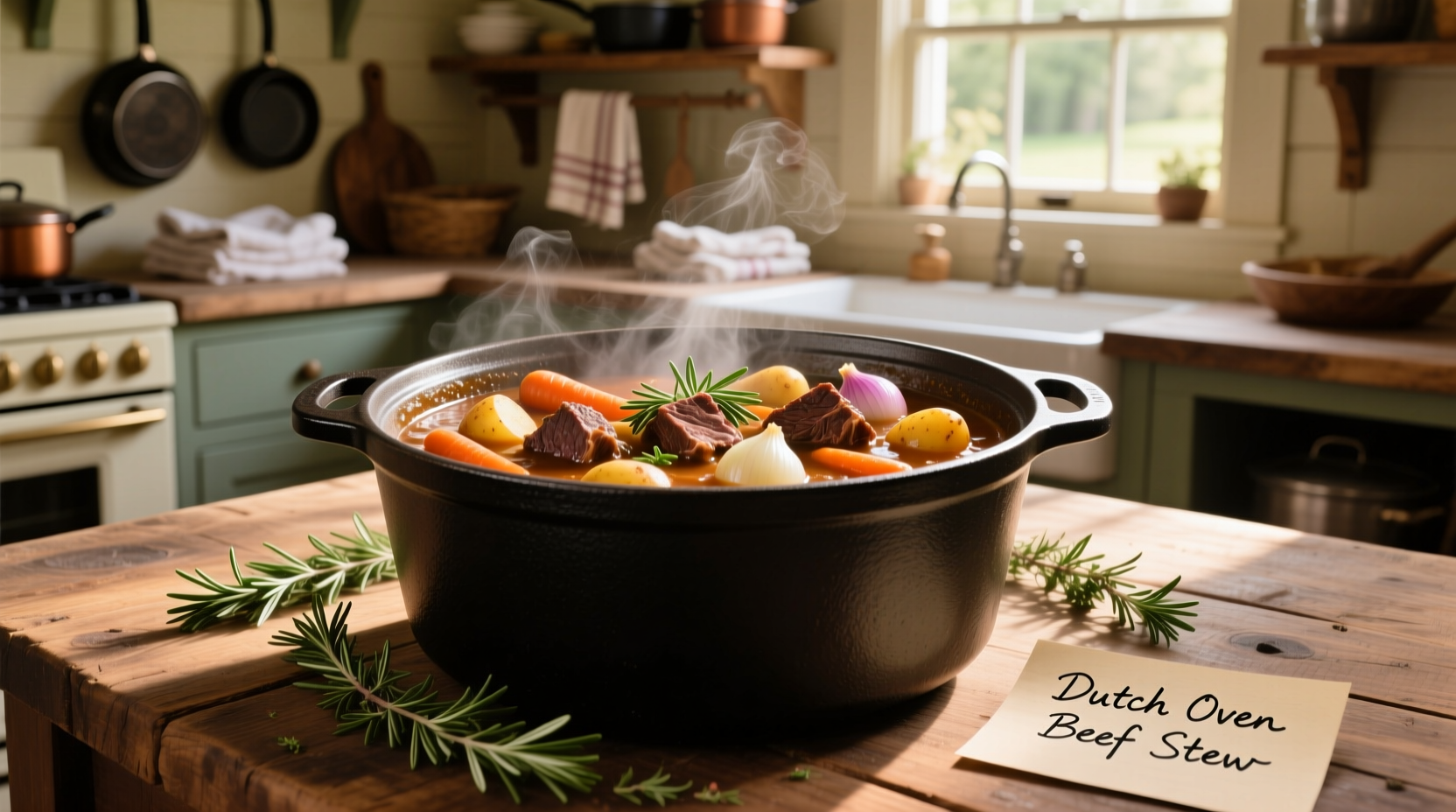The most versatile dishes to cook in a Dutch oven include hearty stews like beef bourguignon, crusty artisan breads such as no-knead sourdough, one-pot braises including coq au vin, rich soups like French onion, and even desserts like cobblers. Dutch ovens excel at slow-cooked meals requiring even heat distribution and moisture retention, making them ideal for recipes that transition from stovetop to oven.
There's a reason Dutch ovens have been kitchen staples for centuries—they're the ultimate workhorses for creating deeply flavorful, restaurant-quality meals at home. Whether you're using a classic cast iron model or a modern enameled version, this single piece of cookware can handle everything from delicate custards to hearty braises that fill your kitchen with irresistible aromas.
Why Your Dutch Oven Deserves Center Stage
Dutch ovens aren't just for camping trips or holiday roasts—they're engineered for culinary excellence. The thick walls provide exceptional heat retention while the tight-fitting lid creates a self-basting environment perfect for transforming tough cuts of meat into fork-tender masterpieces. According to research from the Culinary Institute of America, cast iron cookware maintains temperature within 5°F of the target heat level, compared to 15-20°F fluctuations with standard pots.
| Dish Type | Why It Shines in Dutch Oven | Beginner-Friendly? |
|---|---|---|
| Beef Stews | Even heat prevents scorching during long simmers | Yes (3-4 hours) |
| No-Knead Bread | Steam trapping creates professional crust | Yes (minimal hands-on time) |
| Coq au Vin | Sealing in cast iron locks in wine flavors | Moderate (2-3 hours) |
| Pot Roast | Moisture retention keeps meat juicy | Yes (4-5 hours) |
Your Step-by-Step Dutch Oven Journey
When You're Just Starting Out
Begin with forgiving recipes that showcase your Dutch oven's strengths without requiring precision. Try a simple chicken and vegetable pot pie—sear chicken thighs in the pot, add vegetables and broth, then top with store-bought puff pastry. The heavy lid ensures even cooking while the cast iron base creates perfect browning. For beginners, this eliminates the need for multiple pans while delivering impressive results.
Mastering Intermediate Techniques
Once comfortable, explore no-knead sourdough bread—a Dutch oven's steam-trapping capability creates the professional-quality crust that frustrates many home bakers. Simply mix flour, water, salt and starter, let rest 18 hours, then bake covered for 30 minutes at 450°F followed by 15 minutes uncovered. The FDA's Food Code confirms that proper baking temperatures (above 190°F internal) ensure food safety while developing complex flavors through the Maillard reaction.

Advanced Culinary Adventures
For seasoned cooks, tackle osso buco—the Dutch oven's ability to maintain consistent low temperatures (275-300°F) allows collagen in veal shanks to slowly convert to gelatin without drying. Unlike thin-walled pots that create hot spots, the even heat distribution prevents the delicate marrow from becoming rubbery. Historical records from the Smithsonian show Dutch ovens have been used for similar braises since the 17th century, evolving from Dutch bell-shaped castings to today's versatile designs.
When Not to Reach for Your Dutch Oven
While incredibly versatile, Dutch ovens have limitations. They're not ideal for:
- Quick sautéing of delicate greens (takes too long to heat up)
- High-heat searing of thin cuts (can overcook before browning)
- Acidic tomato-based sauces in unenameled cast iron (can react with metal)
- Delicate custards requiring precise temperature control
Understanding these context boundaries prevents frustration—reserve your Dutch oven for dishes where its thermal mass provides genuine advantage.
Pro Tips for Dutch Oven Success
Temperature control makes or breaks Dutch oven cooking. Always preheat gradually—never place a cold pot in a hot oven. For stovetop-to-oven transitions, reduce oven temperature by 25°F from recipe instructions. When baking bread, place a metal pan with water on the oven floor to enhance steam production beyond what the lid provides.
Maintenance matters—season unenameled cast iron with flaxseed oil baked at 450°F for 1 hour, repeating quarterly. Enameled versions require no seasoning but benefit from avoiding thermal shock (never plunge a hot pot into cold water).
Transform Your Cooking Routine
Adding a Dutch oven to your kitchen arsenal isn't just about another pot—it's about unlocking cooking techniques that create deeper flavors with less effort. The American Home Economics Association notes that one-pot cooking methods reduce cleanup time by 40% while enhancing flavor development through contained moisture and consistent heat. Whether you're simmering a weeknight chili or crafting a Sunday roast, your Dutch oven becomes the foundation for meals that taste like they required far more effort than they actually did.











 浙公网安备
33010002000092号
浙公网安备
33010002000092号 浙B2-20120091-4
浙B2-20120091-4